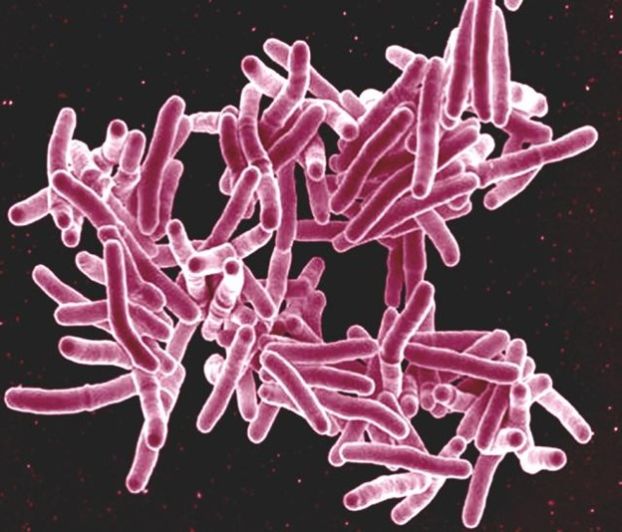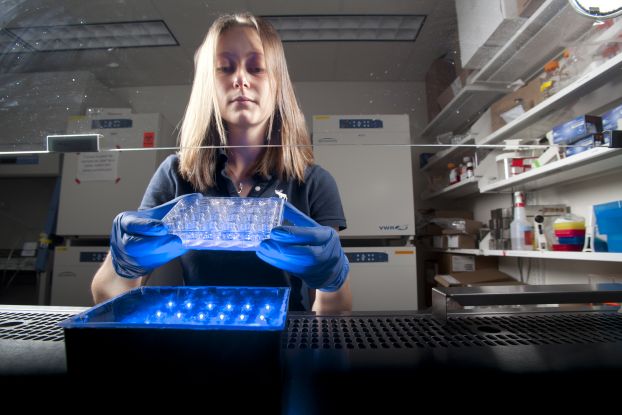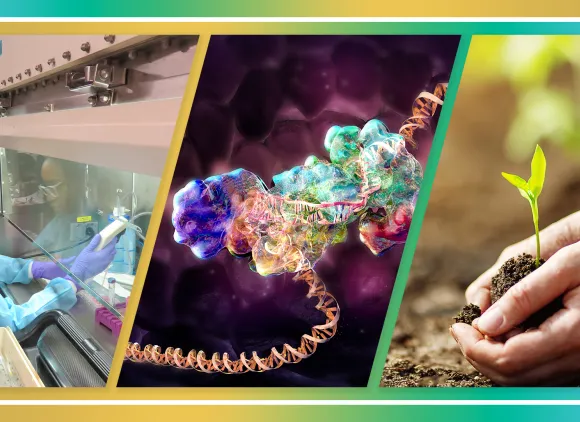What is CRISPR?
CRISPR (short for "clustered regularly interspaced short palindromic repeats") is a natural defense mechanism found in bacteria that helps them fight off viruses.
When a bacterium survives a viral infection, it stores a snippet of the virus's DNA in its own genome. This stored DNA, known as a "space sequence," allows the bacterium to recognize and destroy the virus if it attacks again.
CRISPR was first discovered in 1987 by researchers in Japan, who identified short, repeated regions in bacterial genomes. However, their function remained a mystery for another 20 years, until researchers in France revealed that these sequences play a role in bacterial immunity.

Credit: National Institute of Allergy and Infectious Diseases
Watch this three-minute video to learn how research on bacterial immune systems led to CRISPR.
Blockbuster discovery
The breakthrough that transformed CRISPR from a curiosity to a tool began as a basic research project. Jennifer Doudna, whose earlier research had been supported by NSF, and Emmanuelle Charpentier discovered a DNA-cutting protein, called Cas9, in the CRISPR system of Streptococcus bacteria.
Doudna and Charpentier found that they could control Cas9 using "guide RNA" that directs the protein to cut particular locations in the genome, giving them the ability to cut any DNA molecule with precision. The researchers realized that the CRISPR-Cas9 system could be used to "edit" the genomes of plant and animal cells to cut out one stretch of DNA and, if needed, replace it with another.
CRISPR-Cas9 technology — which has been used to treat sickle cell disease, detect pathogenic mutations, increase corn yields and develop genetic models for biomedical research — is now among the world's most powerful gene-editing tools. Its discovery earned Doudna and Charpentier the 2020 Nobel Prize in chemistry.
Beyond funding Doudna's earlier foundational work on RNA, NSF has continued to support Doudna in refining CRISPR technologies, unlocking the potential for new gene-editing applications such as developing therapeutics for previously untreatable genetic diseases and increasing yields in a variety of crops.
Towards a life-changing technology
With NSF support, scientists are using CRISPR to better understand and treat a variety of diseases. Some examples include:

Cancer research
In 2018, NSF-funded researchers used CRISPR to change pairs of genes linked to cancer and then precisely tracked individual cells in the tumor that formed. This technique allows scientists to replicate and study the many genetic differences found in tumor cells, which could accelerate cancer research and drug development.
New medical treatments
With NSF support in the late 2010s, researchers developed a method to use CRISPR-Cas9 to control gene expression without cutting DNA. A biotech startup, Tune Therapeutics, is now developing medical treatments based on this research.
Safer treatments for genetic diseases
Since 2020, NSF-supported Acrigen Biosciences Inc. has made CRISPR more precise by using anti-CRISPR proteins. These proteins prevent unintended edits, making CRISPR safer and more effective for treating genetic diseases.
Linking genetic differences to health and disease
In 2023, NSF-supported researchers developed a new method called STING-seq, which combines CRISPR with other tools to connect genetic variants to complex traits. This approach can help researchers uncover the genetic basis of many diseases and guide targeted treatments using gene editing or precision drug therapies.
Sowing superior crops
NSF's investments are enabling the discovery and advancement of CRISPR-based technologies to enhance crop production, including:
Better citrus varieties
Since 2019, NSF-supported startup Soilcea and the University of Florida have used CRISPR to develop high-yielding, disease-resistant citrus varieties, partnering with growers to help restore and safeguard Florida's citrus industry.
More precise enhancements to crop traits
In 2021, NSF-supported researchers discovered novel CRISPR variants capable of editing multiple genome sites at once, allowing precise enhancements to crop traits like yield and disease resistance.
New model system
In 2022, NSF-supported researchers identified groundcherry — a close relative of tomatoes, potatoes and eggplants — as a model system for crop improvement. Using CRISPR, they uncovered genes influencing yield and fruit quality, paving the way for increased crop productivity and economic value.


Credit: Duke University
Cutting-edge discovery
Through partnerships like the NSF Enabling Discovery through GEnomics program, and programs supported by the Division of Molecular and Cellular Biosciences, NSF continues to be at the forefront of CRISPR tools and infrastructure, advancing understanding of the rules of life to drive the bioeconomy, national security and human well-being.


